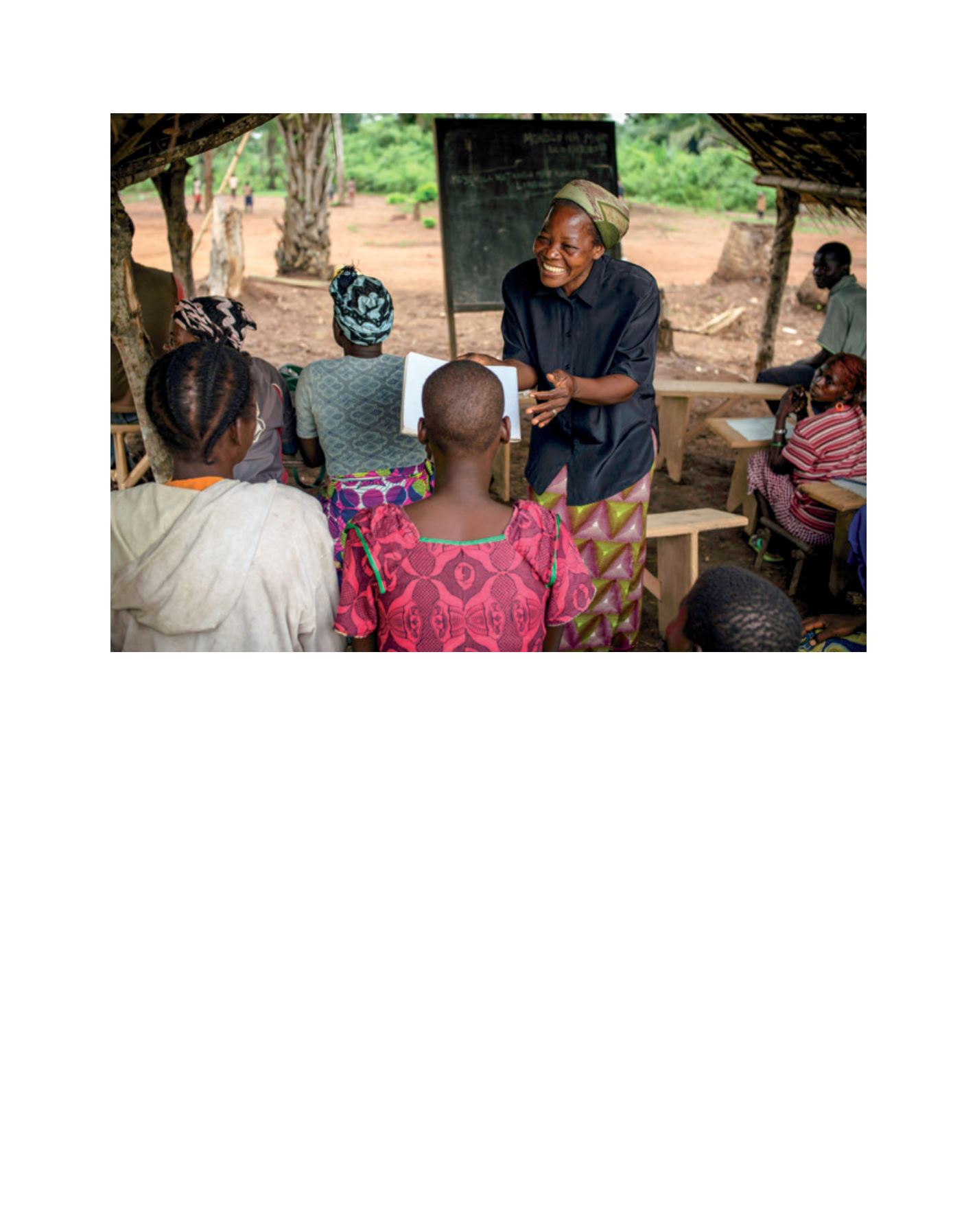

[
] 79
processes and procedures, including its strategic priorities and
notions of risk and vulnerability, or when they may simply not
have the desire to serve as ‘implementing partners’.
Other documented challenges and concerns about part-
nering with faith actors, especially local faith communities
and faith leaders, include charity-based approaches that can
neglect human rights-based approaches to humanitarian assis-
tance. In complex emergency situations, UNHCR staff also
recorded that coordination posed the greatest challenge to
partnering with local faith communities, their networks and
community-based organizations.
It is clear that partnership with UNHCR also poses specific
challenges for faith-based organizations, beyond the issue of
staff attitudes described earlier. One factor is the inherent
inequality of power between a large international organization
and a small local institution. An equally important challenge
for faith-based partners is UNHCR’s procedures and require-
ments, which they may be unable or unwilling to satisfy, and
the fact that staff rotation may affect UNHCR’s institutional
memory and presence in the deep field, with the risk of calling
into question long-standing positive cooperation, albeit on the
basis of ‘trust’ rather than formal arrangements.
Notwithstanding the challenges for both sides, faith-based
organizations, local faith communities and faith leaders have
traditionally contributed to a wide range of protection activi-
ties in humanitarian situations, including:
• providing physical protection and facilitating
humanitarian access
• deterring violence and alleviating suffering through
presence and accompaniment
• mediating tensions between refugees/internally displaced
persons and host communities in conflict or post-conflict
situations
• engaging in reconciliation and peace-building activities
• combating xenophobia and discrimination
• preventing and responding to SGBV or forced recruitment
• improving reception conditions and accompanying the
detained
• providing legal counselling and asylum case-management
• advocating for legislative changes benefiting persons of
concern
• supporting refugee resettlement and/or local integration.
Another initiative that sprang from the High Commissioner’s
Dialogue on Faith and Protection was a call to develop guidance
for faith leaders, which aims to promote tolerance and respect
for the human dignity and human rights of asylum-seekers and
refugees, migrants, internally displaced and stateless persons.
Image: UNHCR/B. Sokol
Winner of UNHCR’s 2013 Nansen Refugee Award, Sister Angélique Namaika instructs a literacy class near Dungu in the
Democratic Republic of the Congo. Many of the class are internally displaced people
A
gree
to
D
iffer

















